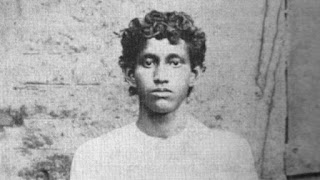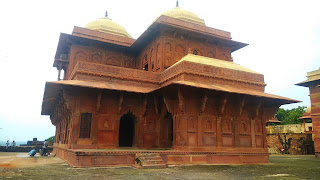 Panch Mahal, Fatehpur Sikri
Panch Mahal, Fatehpur SikriAbout 39 km from the touristy site of Agra, Fatehpur Sikri is considered as an architectural marvel of medieval India. Today the ghost town of Fatehpur Sikri astonishes visitors and history buffs with its majesty and scope. Declared a UNESCO World Heritage Site in 1986, the city-palace complex of Fatehpur Sikri is home to tombs, royal palaces and courts.
Built by the greatest Mughal emperor Akbar, Fatehpur Sikri was the seat of his government from 1571 to 1585. The English traveler Ralph Fitch, who has left an eyewitness account of the social life and economic condition of the Mughal India, visited the Mughal court of Akbar at Fatehpur Sikri in 1585 and wrote, 'Agra and Fatepore are two very great cities, either of them much greater than London and very populous.’
However, the capital was abandoned in 1585 by Akbar. Scarcity of water is the popular explanation for this abandonment. The Mughal emperor made Lahore his new capital, which remained so till 1598.
Among important buildings in Fatehpur Sikri are the Jami Masjid, Buland Darwaza (Lofty Gate), tomb of Sufi saint Shaikh Salim Chishti, pyramidal Panch Mahal, Naubat Khana, Taksal (mint), Karkhanas (royal workshops), Khazana (treasure), Hakim’s quarters, Diwan-i-Khass, Diwan-i-Am, Maryam's House, also called Sunahra Makan, Jodh Bai's Palace, Birbal's House, etc.
Constructed in 1571-72, Jama mosque is the most dominant monument in Fatehpur Sikri. Buland Darwaza or literally lofty gate is the southern entrance of the Jama Masjid. Buland Darwaza, is an imposing structure with a total height of 52 metres from the ground level. It was added to the design of the Jama Masjid.
Tomb of Salim Chishti, in whose honour the city of Fatehpur Sikri was built by Akbar, is one of the finest specimens of Mughal architecture. Described as an “architectural cameo” by Percy Brown, the noted writer on Indian architecture, the tomb was built by Akbar in 1580-81. It was Salim Chishti after whom Akbar named his son, Salim, who later on went on to become the fourth Mughal emperor.
Palace of Mariam-uz-Zamani ('Mary of the Age') is another famous structure in Fatehpur Sikri. Mariam-uz-Zamani was Akbar’s first Rajput queen and mother of Jahangir, the fourth Mughal emperor.
One of attractions in Fatehpur Sikri is Hiran Minar, a 21.34 metres tall tower which is entered through a flat-topped door leading to a staircase. 53 steps will take you to the top inside the tower from where you can have a bird’s-eye view of the surroundings.
Panch Mahal is Fatehpur Sikri’s architectural gem. The structure consists of four storeys of decreasing size. While the ground floor contains 84 columns, the first storey has 56 columns. The second and third stories contain 20 and 12 columns respectively. The top storey contains 4 pillars supporting a chhattri, taking the number of the columns to 176.
Diwan-i-Khass at Fatehpur Sikri /WikimediacommonsDiwan-i-Khass (Hall of Private Audience) is another highlight of Fatehpur Sikri. Its interior is endowed with a massive, richly carved column supporting an elaborate capital.
The pilasters and brackets of the residence of Akbar’s confidant Birbal in Fatehpur Sikri show the traditional Hindu influence. Popular belief is that this palace was a part of the Imperial Harem and was occupied by Akbar's two senior queens, Ruqayya Begum and Salima Sultan Begum.











